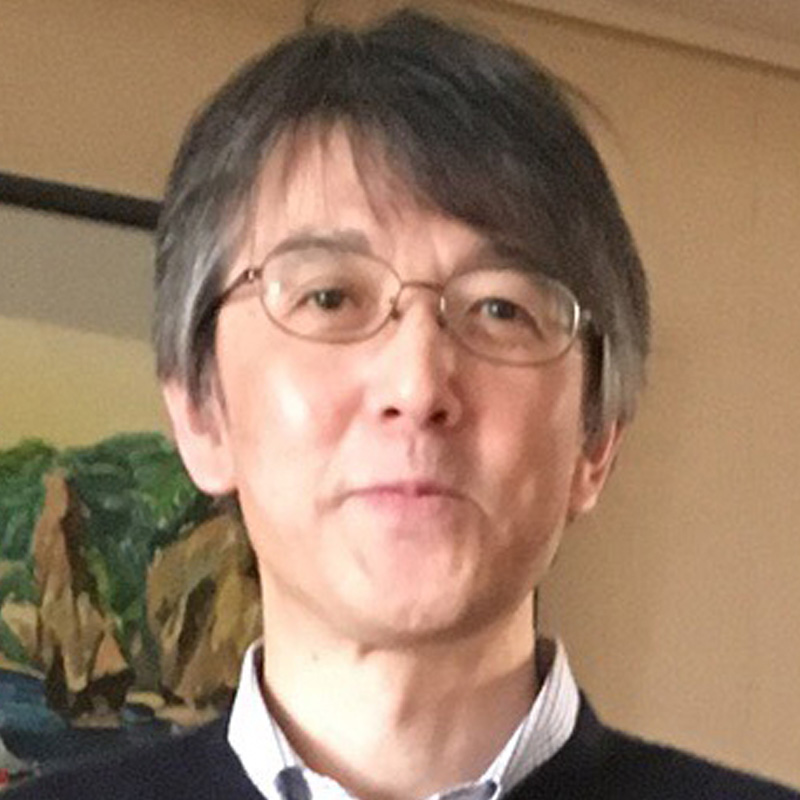TAKAHASHI Masayuki
Specially Appointed Professor
Exploring the molecular mechanism of controlling cell shape
Department of Chemistry, Organic and Biological Chemistry

| Theme | Studies of the molecular mechanism of change and maintenance of cell shape through intracellular contractile apparatus |
| Field | Biochemistry, Cell biology, Molecular biology |
| Keyword | Protein, Myosin II, Actin, Cell motility, Cytoskeleton, Cell migration, Cytokinesis |
Introduction of Research
Myosin was discovered as a protein responsible for skeletal muscle contraction and since then has been the subject of extensive research. Myosin utilizes the energy generated from ATP hydrolysis to translocate actin filaments. Most of the cells in our body contain nonmuscle myosin II, which plays an important role in cellular motile processes such as cytokinesis and migration. Similar to myosin in muscles, myosin II, can function only when assembled as filaments. In contrast to muscle myosin that forms filaments all the time, myosin II assembles and forms filaments only when necessary. Myosin II can change the morphology of cells by translocating the actin filaments anchored to the membrane (Fig. 1). Cell motility can thus be perceived as localized changes in cellular morphology. Furthermore, maintaining the altered morphology of cells is an important function of myosin II and actin, so that the cell can function normally. Myosin II occurs as three isoforms in mammals; however, the functional differences among these isoforms are still unclear (Fig. 2). Our research aims to elucidate the function of these isoforms to better understand the underlying mechanism behind changes in and maintenance of cellular morphology. We are using methods in cell biology that incorporate some recent advances in technology and aiming towards research that can be called “protein chemistry using the cell as a test tube.”
Representative Achievements
Y. Sato, K. Kamijo, M. Tsutsumi, Y. Murakami and M. Takahashi,
J. Biochem. 2020, 167, 25-39.
K. Yamamoto, K. Otomo,T. Nemoto, S. Ishihara, H. Haga, A. Nagasaki, Y. Murakami and M. Takahashi,
Exp. Cell Res. 2019, 376, 67-76.
M. Kuragano, T. Q. P. Uyeda, K. Kamijo, Y. Murakami and M. Takahashi,
Mol. Biol. Cell, 2018, 29, 911-922.
M. Kuragano, Y. Murakami and M. Takahashi,
Biochem. Biophys. Res. Commun., 2018, 498, 25-31.
T. Kiboku, T. Katoh, A. Nakamura, A. Kitamura, M. Kinjo, Y. Murakami and M. Takahashi,
Genes Cells, 2013, 18, 90-109.
| Academic degree | Ph.D. |
| Academic background | 1983 B.Sc. Department of Chemistry II, School of Science, Hokkaido University 1985 M.Sc. Graduate School of Science, Hokkaido University 1988 Completed Ph.D. program without a Ph.D. degree, Graduate School of Science, Hokkaido University 1989 Ph.D. Graduate School of Science, Hokkaido University 1988-1989 Kao Corporation 1989-1992 Postdoctoral fellow, NHLBI, NIH, USA 1992-1993 Assistant Professor, Department of Polymer Science, School of Science, Hokkaido University 1993-2001 Assistant Professor, Department of Biological Sciences, Graduate School of Science, Hokkaido University 2001-2007 Associate Professor, Division of Chemistry, Graduate School of Science, Hokkaido University 2007-2020 Associate Professor, Department of Chemistry, Faculty of Science, Hokkaido University 2020-present Specially Appointed Professor, Department of Chemistry, Faculty of Science, Hokkaido University |
| Affiliated academic society | The Japanese Biochemical Society, Japan Society for Cell Biology, The Molecular Biology Society of Japan, The Chemical Society of Japan, The American Society for Cell Biology |
| Room address | General Research Building 2 2-202 |



